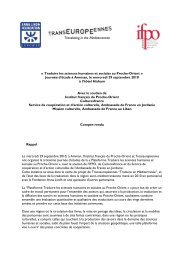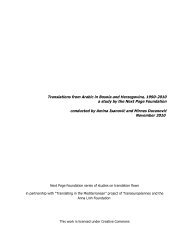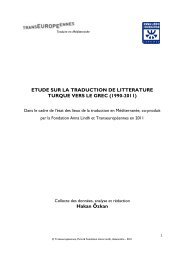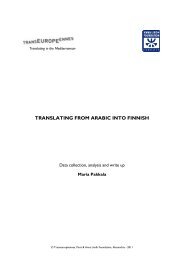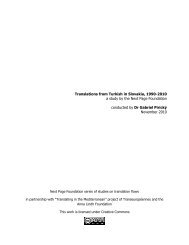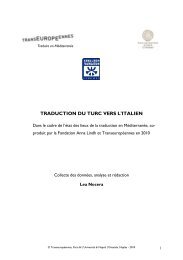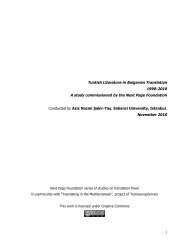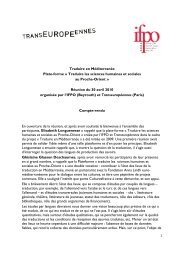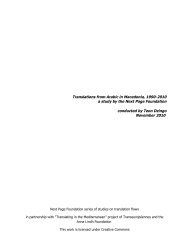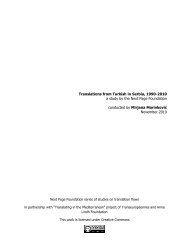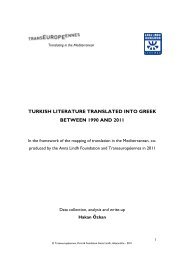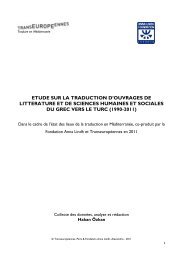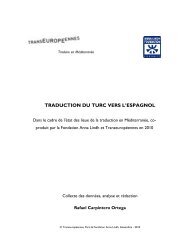TIM 2010 EastEuro-Arabic Next Page Foundation - Transeuropéennes
TIM 2010 EastEuro-Arabic Next Page Foundation - Transeuropéennes
TIM 2010 EastEuro-Arabic Next Page Foundation - Transeuropéennes
- No tags were found...
You also want an ePaper? Increase the reach of your titles
YUMPU automatically turns print PDFs into web optimized ePapers that Google loves.
discrepancy to the incompleteness of the <strong>Arabic</strong> data and envisage an error margin of about20 percent. In addition, due to the large number of Muslim population, some countries of theCEE remain a stable consumer of Islam-related publications translated into their languages.In fact, more than ½ of the 1919 titles translated into CEE languages from <strong>Arabic</strong> are in oneway or another related to Muslim religion.The most translated source language seems to be Polish with 47 titles, followed byBosnian and Slovak with 15 titles each. We were unable to identify even a single Lithuaniantranslation after 1989.Translations into <strong>Arabic</strong>, 1989-<strong>2010</strong>50454035302520non-fictionliterature151050BosnianBulgarianCroatianHungarianCzechLithuanianMacedonianPolishRomanianSerbianSlovakSlovenianregional anthologiesLiterary texts, predominantly by 20 th and 21 st century authors, are approximately twice ascommon as non-fiction translations. It should be noted that the percentage of dramaticworks translated into <strong>Arabic</strong> from CEE languages is considerably higher than translations ofthe same genre in the other direction, i.e. from <strong>Arabic</strong>.Most of the translations included here are done via an intermediary language. After 1989,English and French have replaced Russian as the major intermediary languages fortranslation. The reasons for this are twofold. First, the general lack of translators from CEElanguages but also the lack of cross-border communication between translation communitiesin the different Arab countries make it difficult for publishers to identify appropriatetranslators. An editor in Egypt can only come to know of the existence of, say, a Czechtranslator in Syria or become acquainted with his/her work by accident. Since only a few CEEcountries have programs that provide information on their national literatures, an Arab editorhas no channels for getting to know, let alone reviewing, an East European author except forin English or French editions. However, the phenomenon of mediated translation iswidespread in the Arab world and is used even for languages for which translators should beavailable in principle, such as German, for example. Often, translations are carried outthrough intermediary languages without appropriate reference being made.7



